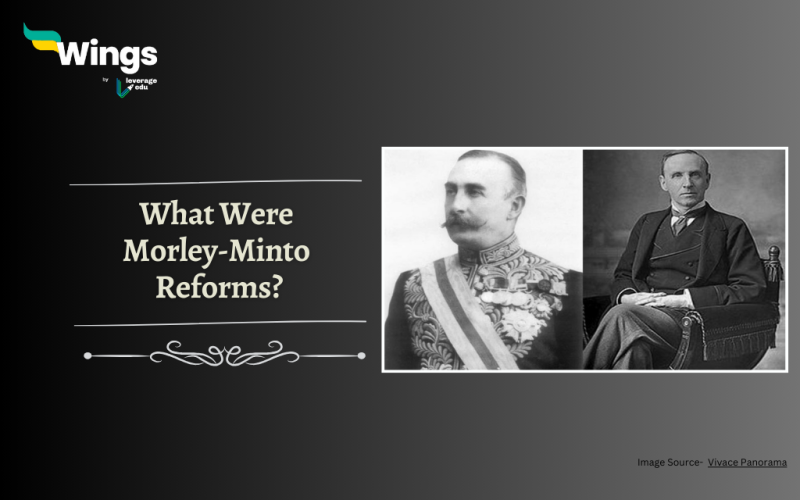The Morley-Minto Reforms were a compromise between two viewpoints. The reforms were named after John Morley, the then Secretary of State for India, and Lord Minto, the then Viceroy of India. The reforms were a pivotal chapter in India’s struggle for self-governance enacted by the British Parliament. Let us get to know the major provisions they laid out for India in this blog.
Table of Contents [show]
Main Provisions of Morley-Minto Reforms
The duo introduced a number of important changes. Morley was a Liberal politician who believed in gradual reform, while Minto was a conservative who was more skeptical of Indian demands for self-government. They bought reforms like –
- Size of Legislative Council – Increasing the size of the legislative councils, both at the central and provincial levels.
- Indirect Election- Introducing a system of indirect elections, whereby members of local bodies would elect members of the provincial legislative councils, who in turn would elect members of the central legislative council.
- Allowance of Indian Members- Allowing for the appointment of Indian members to the Viceroy’s Executive Council and the Council of the Secretary of State for India. Satyendra P. Sinha was appointed by Lord Minto on the persuasion of Lord Morley as the first Indian Member of the Viceroy’s Executive Council.
- Separate Electorates- One of the most contentious aspects of the Morley-Minto Reforms was the introduction of separate electorates for Muslims. While this move was intended to protect minority interests, it also sowed the seeds of communalism, which would later haunt the subcontinent.
Also Read – Full List Of Viceroys Of India
The Impact of Morley Minto Reforms
The reforms were welcomed by some Indians, particularly the moderates who believed in gradual reform. However, they were also criticized by others, particularly the radicals who demanded immediate self-government.
One of the most controversial aspects of the reforms was the introduction of separate electorates for Muslims. This meant that Muslims would vote for their own representatives in the legislative councils, rather than voting alongside Hindus and other groups.
The British government argued that separate electorates were necessary to protect the interests of Muslims, who were a minority in India. However, many Indians, including Hindus and Muslims alike, opposed separate electorates. They argued that it would divide the country along religious lines and make it more difficult to achieve unity.
The reforms had a mixed impact on India. On the one hand, they introduced a number of important changes that increased the participation of Indians in the government. On the other hand, they also introduced the principle of communal representation, which would have a lasting impact on Indian politics.
Also Read- The Indian Councils Act of 1909: Morley-Minto Reforms
The Morley-Minto Reforms were a pivotal moment in India’s struggle for self-governance. The reforms of 1909 were a landmark in the history of British India. They represented both hope and complexity as they introduced a number of changes to the way India was governed, including increasing the participation of Indians in the legislative councils as they granted Indians greater representation in the legislative process but also introduced divisive elements. These reforms were a precursor to the larger battles and movements that would shape the destiny of a nation.
FAQ’s
The Indian Council Act of 1909, also called the Morley-Minto Reform, aimed to satisfy the Congress Moderates and introduced religious-based separate electorates, earning Lord Minto the title of “Father of Communal Voting in India.”
The Indian Councils Act of 1909 is known as the Morley Minto Reforms, and it expanded democracy by making the legislative councils, both at the central and provincial levels, larger.
In 1909, the reforms, known as the Indian Councils Act, were introduced. These reforms expanded the Councils to allow Indian lawmakers to voice their views and recognized the right of Muslims to have their own electoral representation.
Relevant Blogs
We hope you liked our blog. If you want to read more articles like this, you can get Study notes on the Modern History of India here. Also, you can visit our general knowledge page on Indian History!
 One app for all your study abroad needs
One app for all your study abroad needs















 45,000+ students trusted us with their dreams. Take the first step today!
45,000+ students trusted us with their dreams. Take the first step today!
